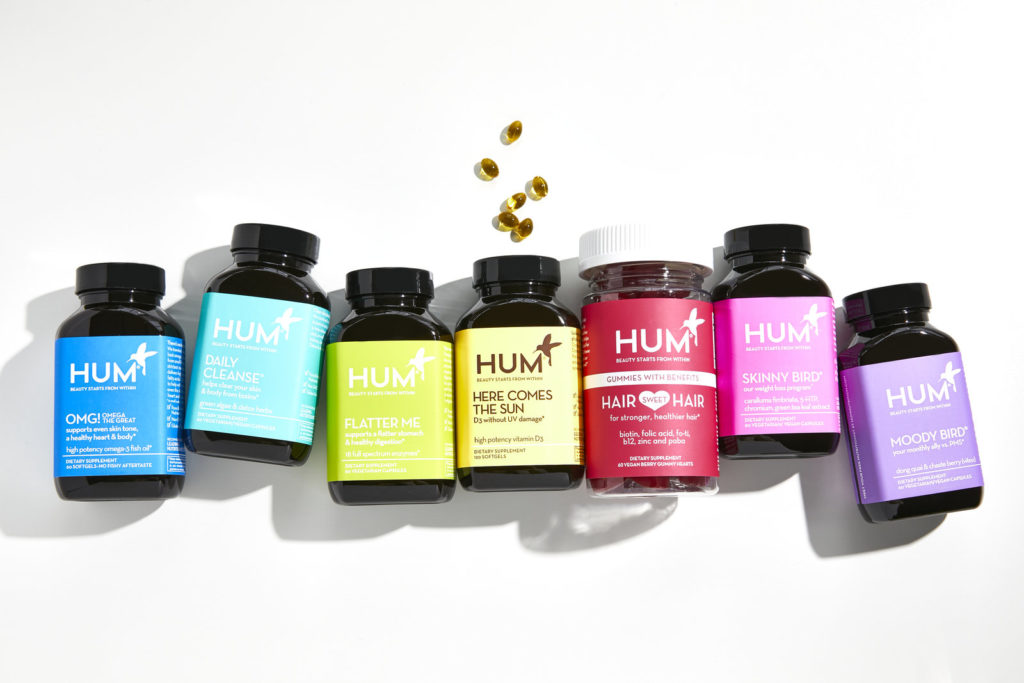A few weeks back, we delved into the wellness industrial complex. While exploring the underlying factors contributing to the unstoppable growth of a $4T+ industry, something interesting revealed itself.
Well… a few things, actually:
- Wellness isn’t a static state; it’s an ideal we constantly pursue.
- Dissatisfaction with modern healthcare has empowered wellness.
- Medicine treats disease, wellness sells outcomes.
It’s the last bullet that really got us thinking. From Vital Proteins to Four Sigmatic and HUM Nutrition to The Nue Co., many of the companies that have become synonymous with wellness are simply selling us the outcomes we desire most. By preying on our insecurities and playing up an aspirational version of who we could become, they’ve perfectly positioned themselves as the solution to our shortcomings.
The Playbook
The playbook for how it’s done is best explained as part of the wellness lexicon. From the ingredients and the outcomes to the marketing of various concoctions, an entirely new language has emerged for how wellness brands talk about themselves and talk to consumers.
This fact is most evident on the websites of popular wellness brands. After surveying 100 Fitt Insider readers to reveal the vitamin and supplement brands they use, recognize, or perceive are executing well, we arrived at a list of 10 companies.
- That list includes Vital Proteins, HUM Nutrition, Four Sigmatic, Ancient Nutrition, Moon Juice, The Nue Co., Bulletproof, Onnit, OLLY, and Goop.
With this information in hand, we analyzed each company’s websites and social presence to better understand their marketing tactics, as well as the similarities and differences. In doing so, a shared playbook we’re calling the new wellness lexicon practically jumped off the screen.
Functional Ingredients
From turmeric to Cordyceps and MCT oil to lion’s mane, functional ingredients are an essential component of what we’ve come to think of as wellness. Increasingly, new-age brands are co-opting ingredients rooted in Eastern medicine or homeopathic remedies, then repackaging them as the antidote to modern ailments. Among the brands we analyzed, the most common ingredients included collagen, adaptogens like ashwagandha, mushrooms, and Cordyceps (a fungus), and bone broth protein.
Shoppable Categories
Many of the websites we clicked through were divided into similar shoppable categories, including Immunity, Mood, Skin or Beauty, Focus, Sleep, Gut Health, and Performance or Energy. This approach is notably different than what used to pass for wellness at stores like GNC, where the walls were lined with products covered with phrases like ‘Ripped Fuel’ or ‘Ultra Mega Multivitamin’. Worse, half the store is dedicated to single-ingredient pill bottles that no one, including the clerk, could come up with a use for.
Selling Outcomes
Building on that last sentence, recognizing that most people don’t know, care, or want to investigate individual ingredients, the smartest brands have packaged their products into all-in-one solutions. As a result, within each shoppable category, you’ll find bottles labeled ‘Radiant Glow’, ‘Big Chill’, ‘Think Fast’, ‘Well Rested’, and ‘Get Going’. No matter how you’re feeling, you could always feel better. And these companies have the cure for almost everything.
Going Deeper
The new wellness lexicon has also given us words like nootropics. It has remade pills, shakes, and powders into elixirs, tonics, and blends. It also replaced the word vegan with plant-based. And it has introduced acquisition in the form of questionnaires that prescribe (although they’re not a prescription) individualized supplement protocols.
- In all, the playbook is a masterclass in branding and marketing built atop ingredients that, when they’re revealed as money makers, are eventually commoditized.
This cycle is most evident with respect to whey protein. What was a niche drink for athletes and bodybuilders has become an obsession. As a result, the wholesale protein-ingredient market is expected to reach $40B by 2024.
Now, protein has become so commoditized that companies who failed to build a formidable brand have seen their market share shrink. Meanwhile, the industry (and the consumer) has moved to the next hot ingredient.
The Playbook in Action
Returning to our list of reader-preferred brands, many of these companies have succeeded in popularizing certain products and ingredients.
- Vital Proteins has become synonymous with collagen peptides. The company is forecasting $200M in revenue for 2019. Three years ago, the global collagen market was valued at $4B and is expected to reach $6.5B by 2025.
- Four Sigmatic brought mushrooms into the mainstream, earning more than $60M in annual revenue, per Crunchbase. The global market for functional mushrooms totaled $5.8B in 2018 and will grow 6.4% by 2024.
- Bulletproof is the reason you know about MCT oil. As the super fats fueling the keto economy, the market for medium-chain triglycerides or MCTs is expected to reach $2.5B by 2025.
- Ancient Nutrition raised $103M in funding to corner the market on bone broth protein and quickly became the number two-ranked protein supplement.
Looking ahead
Despite any level of funding or degree of success, the new challenge for these companies will be weathering a storm of competition and commodification.
The true test will reveal whether or not they built a brand strong enough to sustain the next trend or the hottest new functional ingredient. Then, whichever products or companies arise, expect them to reinvent the current wellness lexicon to start this cycle all over again.



